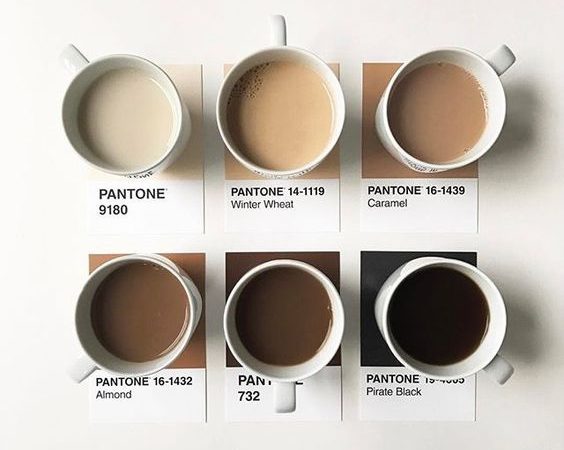Every once in a while it doesn’t hurt to give your website design a refresh. It helps to remove older blocks of code which were slowing load times and costing you pageviews. It can also help to re-evaluate what you’re trying to do with your site and how your audience should interact with each page element.
I’ll be going over a few tricks to ease the process of a website refresh. The redesign process isn’t something that should be happening weekly, but it is a powerful process that should be applied to your site every so often. If you’re starting to feel lackadaisical about your site’s design that may be a clue you could use a refresher.
Why are people visiting your website?
This may seem like a silly question at first but I’ve found very few webmasters truthfully sit down and ask themselves this. What purpose does your website serve your visitors? Along with that, how does your design reflect these ideas?

If you never asked yourself these questions when you started to design your website the best time to do it would be during a redesign period. You can figure out what your visitors are really interested in. Maybe it’s just the page content, or maybe they spend more time interacting with their profile, or leaving comments on posts. Whatever the actions of your visitors may be it’s key to define them upfront before starting to redesign your site.
This information can help you figure out what elements on your current site are hindering the accessibility and what you could do to improve the others. You may also find that your users are asking for some type of interactivity or widget that would be perfect for your site, but it’s strangely missing. The perfect time to add new features to a design would be during a refresh period. Make sure you collect as much data as possible before sitting down at the work bench.
Keep your Brand Consistent Throughout
A website refresh is a very different concept from a website re-branding. Many designers can’t tell you the difference but they hold completely different outcomes in the end.
To rebrand your entire site would take quite a while. You’d need to come up with an entirely new set of everything – new logo, new page elements, new color scheme, new graphics… basically hitting the drawing board from scratch again.

Refreshing your site’s current design is much different. The context here is going into your site to find out what parts of it are working and what aren’t. The goal is to then remove elements which are performing poorly and move around/fix up the one’s that can help.
You may also consider adding new elements or running trials for 2 or 3 different interfaces to see which of them perform the best.
Plot for your Target Audience
The “target audience” you’re hitting will change from site to site. Each website has a different goal in mind and provides a completely different service than the next competitor, thus it’s very important to define your target audience early.

This isn’t a difficult step. You just need to consider your current niche and where you’re trying to appear in the market. If you run a blog about video game news you may look into a similar market as IGN or Joystiq. Consider their designs and who visits their site – what do they do right? Do you hold any of these traits on your website?
A gaming website is just one of thousands of niches to be found around the web. Google is your best tool for the job here since you can search by keywords and popular content you showcase on your website. Figure out what type of audience you want to draw in – younger, older, tech-savvy, TV enthusiasts. Once you know who to target it will me much easier to figure out what you need to do better to reel more in.
Identify Your Website’s Stress Points
Stress points are areas in your site where visitors seem to get confused, lost, or just give up and leave your page entirely. Not every design will have these but it’s never bad practice to go through your current design and see if you can pinpoint any obvious ones.
From a user experience perspective these could be anything. Links in your navigation too small or difficult to read, maybe paragraphs are spaced too closely or images take up too much space. I encourage holding a poll for your readers to help out during the refresh process. They are the ones experiencing the site after all, their opinions should be the most important as the designer.
If you can’t find any major stress points in your site design you may consider seeing what areas look “out of place” or just plain odd. These aren’t stresses for your visitors but chances are good if you think they look weird, others probably will too. Try messing around with page elements to see if you can fit blocks into your site easier. Sketching a new design layout on a piece of paper can sometimes help out when you’re really stuck in with a creative design block.
Whatever you may decide to change don’t bother trying to re-invent the wheel. Much of what you would need to do has already been done countless times over and it would be silly to do it all yourself. Save some time and Google around for whatever it is you’re looking for. Chances are good you’ll find a few articles or code snippits containing exactly what you want.
As web designers we can have a hard time letting go. This is especially true when it comes to our past design works. However your visitors and clients do not live in this same sense of nostalgia and you must adapt as your site grows and develops a community.
These are just a few simple tips to get you started on a brand new refreshed design for your website. It’s a fun process every few months to sit back and contemplate potential new features, releasing these updates 2 or 3 times a year. It keeps your visitors on their toes and helps your site adapt to an ever-changing Internet.





I’m actually currently redeveloping one my my busiest websites and this article has given me a great insight into what I should focus on. Great timing!
Sometimes you must choose new modern platform and design.
Great advice here, just what I needed. I’m actually thinking of emulating the DubLi color scheme, anyone have any thoughts on that?
hey thats some sound advice, i’ll be sure to apply it to my next website design. thanks a lot
It’s usually a far easier task as your reworking something you’ve already made.
Well formulated article. Newbies should look to this for insight and/or refer new clients that aren’t quite sure about their brand or identity
Nice article. I’ve reworked a few websites and it takes time, but it doesn’t have to be a complete redo, like you say. It’s amazing what a few changes here and there can do to refresh your site.
Hey Jake, this was a really interesting read. I usually get a few old sites that myself or someone in my team has built which need to be ‘Refreshed’. Going through a site and updating/removing any old web standards is a really effective way of boosting the experience of a persons website. I’ve learnt a little from this and I think many others will benefit from reading it! Thanks for posting.
Thanks for the good advice and insight. Over the years I’ve redesigned a few websites that I had previously designed. I really enjoy it as there’s a starting point you’re familiar with so you can really look at the finer details along with incorporating any technological advances since the original design.
Good read! I just wanna quote something from the article…as an excellent reminder for everyone!
“The goal is to then remove elements which are performing poorly and move around/fix up the one’s that can help.”